Mainstream Gaming Powerhouse!
Wow. Until a lot of you guys messaged me over the past couple weeks, I had no idea that the last time we did a $1,00 gaming PC build guide, it was all the way back in December of last year. Guess it was about time to update that old thing!
So for our gaming PC build this month, I started off trying to put together a gaming PC build at the $1,000 range. While I had no trouble doing that, in order to fit the $1,000 budget, I ended up having to make a lot of compromises that I wasn’t willing to make on this build. Now before starting the build, I wanted to put together a solid mainstream system that had all the next generation technologies any gamer would be looking for. Technologies such as a high performing graphics card, an overclocking friendly Intel Core i5 CPU, and a SSD. Unfortunately, at the $1,000 budget, I felt like it wasn’t enough budget to get what I wanted, so instead I bumped up to the $1,200 budget, which allowed me to put together what I think is the absolute best mid-range gaming PC build you can get.
Ready to find out what I came up with? Let’s take a look!
Best Mid-Range Gaming PC Build Component Summary – Budget: $1,200
| CPU | Intel Core i5-4670K | $225 |
|---|---|---|
| Motherboard | ASUS Z87-Plus | $148 |
| Memory | 8GB Corsair Vengeance DDR3 1600MHz Low Profile | $90 |
| GPU | MSI GTX 760 OC 2GB | $265 |
| Case | Corsair Carbide Series 300R | $70 |
| Boot Drive | Samsung 840 EVO 250GB | $170 |
| Optical Drive | OEM DVD Drive or OEM Blu Ray Drive | $22 |
| PSU | Corsair TX-650M | $100 |
| CPU Cooler | Cooler Master Hyper 212 Plus | $28 |
| OS | Windows 7 64-bit or Windows 8.1 64-bit | $89 |
| Total | $1,207 |
Core Component Details
CPU – Intel Core i5-4670K
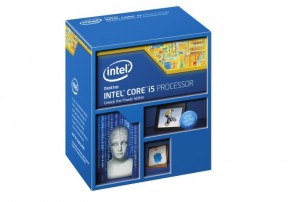 When I started thinking about what the best mid-range gaming PC build would look like, I practically started out thinking about Intel’s 4th generation Core i5 processor. From a price to performance standpoint, it was an obvious choice yet from an absolute performance standpoint, it was also an obvious choice as well.
When I started thinking about what the best mid-range gaming PC build would look like, I practically started out thinking about Intel’s 4th generation Core i5 processor. From a price to performance standpoint, it was an obvious choice yet from an absolute performance standpoint, it was also an obvious choice as well.
The specific Core i5 processor I settled on for our gaming build today is the Intel Core i5-4670K. Now it’s not the first time I’ve recommended the Intel Core i5-4670K. I’ve recommended it on a number of gaming PC builds in the past and I think it’s pretty much the best processor you can buy if you’ve got a budget of $1,000 or over. It has plenty of single threaded performance, which is great for most applications such as launching a browser, starting Microsoft Word, or playing a game, and it’s also a quad core CPU, which means it’ll take care of whatever apps you have that can take advantage of multiple threads. Of course, it’s not 100% optimal if you’re planning to use tons of multi-threaded applications such as video editing or 3D graphics design (For that, go with the Intel Core i7-4770K), but if gaming, web browsing, Netflix, and Microsoft Word is all you’re looking for, the Intel Core i5-4670K is the perfect processor for the job.
Additionally, since we’ve also went with a K edition processor, it also has an unlocked multiplier. Unlocked multipliers make it easy to overclock the CPU, which will allow users to get up to a good ~15%-30% performance boost depending on CPU’s cooling solution and the users’s luck with the CPU. Considering it’s only an additional $5 for the privilege, why not?
Motherboard – ASUS Z87-Plus
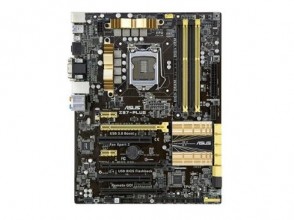 Originally, I started off this build with the MSI Z87-G43. Since I bumped up the budget to $1,200 though, it gave me a bit of room to upgrade the motherboard to something with a lot more expansion options and features, which is why I ended up with the ASUS Z87-Plus motherboard. While the MSI Z87-G43 is a perfectly capable motherboard for our purposes, the ASUS Z87-Plus is even better.
Originally, I started off this build with the MSI Z87-G43. Since I bumped up the budget to $1,200 though, it gave me a bit of room to upgrade the motherboard to something with a lot more expansion options and features, which is why I ended up with the ASUS Z87-Plus motherboard. While the MSI Z87-G43 is a perfectly capable motherboard for our purposes, the ASUS Z87-Plus is even better.
As expected, the ASUS Z87-Plus is a Intel Z87 chipset based motherboard carrying the LGA 1150 socket, which will support all of the latest 4th generation Intel Core processors. As for features, the Z87-Plus utilizes ASUS’s rock solid 8 phase DIGI+ digital power delivery system, which will deliver clean and stable power to the CPU, 5K hour rated solid capacitors, overcurrent protection circuits, ESD protected circuit designs, and corrosion resistant back I/O coating for maximum stability and longevity.
Of course, it’s not short on expansion options either. The Z87-Plus includes 4 DIMM slots for up to 32GB of DDR3 memory, 2x PCIe 3.0 x16 slots + 1x PCIe 2.0 x16 slots giving you the option of multi-GPU configurations should you choose, 6x SATA 6Gb/s ports, Intel LAN ports, plenty of USB 3.0 ports and more!
Memory – 8GB Corsair Vengeance DDR3 1600MHz Low Profile
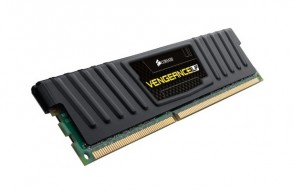 Memory isn’t too expensive these days, so for our mainstream system I went with 8GB of Corsair Vengeance DDR3 1600MHz Low Profile. This is pretty much my go-to memory when putting together any build as it’s reliable, it’s fast, and it doesn’t cost an arm and a leg. If it does have any problems, Corsair also offers a lifetime warranty on these sticks, so rest assured, these should outlast its useful life.
Memory isn’t too expensive these days, so for our mainstream system I went with 8GB of Corsair Vengeance DDR3 1600MHz Low Profile. This is pretty much my go-to memory when putting together any build as it’s reliable, it’s fast, and it doesn’t cost an arm and a leg. If it does have any problems, Corsair also offers a lifetime warranty on these sticks, so rest assured, these should outlast its useful life.
For our gaming build today, I’ve also gone with the low profile memory sticks as well. The reason why I also go with the low profile sticks is that some air coolers tend to have compatibility issues when using higher profile memory sticks such as the regular Corsair Vengeance DDR3 sticks, so to avoid these issues, low profile is the way to go.
Case – Corsair Carbide Series 300R
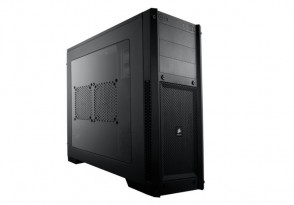 Ever since the release of the Corsair Carbide 300R about a year ago, it’s been one of my favorite cases for new budget and mid-range builds. Coming in at only $70, it’s not terribly expensive, but it has plenty of expansion options, plenty of cooling, completely tool-less design and a great clean and modern, stealthy look that screams refinement.
Ever since the release of the Corsair Carbide 300R about a year ago, it’s been one of my favorite cases for new budget and mid-range builds. Coming in at only $70, it’s not terribly expensive, but it has plenty of expansion options, plenty of cooling, completely tool-less design and a great clean and modern, stealthy look that screams refinement.
In terms of features and design, the Corsair Carbide 300R features support for ATX and mATX sized motherboards, 3x 5.25″ drive bays, 4x 2.5″/3.5″ drive bays, 7 expansion slots, 2x front USB 3.0 slots, headphone/microphone ports, and more. Cooling is handled by a single 120mm exhaust fan in the back with a 140mm intake fan up front with dust filters included to prevent dust from collecting in the system. There’s also tons of room underneath the motherboard tray for cable management and with support for graphics cards up to 450mm in length, it’s the perfect case for our gaming build today.
GPU – MSI GTX 760 OC 2GB
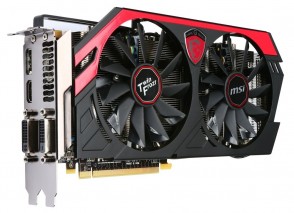 With AMD’s introduction of their R9 200 series GPUs, a lot of attention has been focused on AMD lately causing massive shortages in R9 270, R9 280, and R9 290 stock, but a lot of people are forgetting that Nvidia GPUs are still neck and neck when it comes to performance and Nvidia GPUs recently received price cuts to make them very competitive against AMD’s latest offerings.
With AMD’s introduction of their R9 200 series GPUs, a lot of attention has been focused on AMD lately causing massive shortages in R9 270, R9 280, and R9 290 stock, but a lot of people are forgetting that Nvidia GPUs are still neck and neck when it comes to performance and Nvidia GPUs recently received price cuts to make them very competitive against AMD’s latest offerings.
This is why for our build today, we went with the MSI GTX 760 OC 2GB graphics card. The MSI GTX 760 OC 2GB is a very powerful MSI custom designed GTX 760 which is not only overclocked to 1150MHz out of the box, it also comes with MSI’s Twin Frozr IV cooler as well. For those familiar with MSI’s Twin Frozr IV cooler, you’ll know that it’s a very powerful cooler design that uses a combination of huge fans, a huge heatsink, and superpipes to keep the GPU cool and quiet making it one of the best 3rd party heatsink designs on the GPU market today. Those looking to play the latest games at high to ultra settings at 1920×1200 or lower resolutions will find that the MSI GTX 760 an excellent choice for their needs.
Those looking for a bit more horsepower can also opt for the MSI GTX 770 Lightning. The GTX 770 is ~30% faster than the GTX 760, but the MSI GTX 770 Lightning includes unlocked voltage controls for those interested in overclocking their graphics cards. The card is also at a pretty good price at the moment, currently available for $344.99 after a $15 rebate.
Storage – Samsung 840 EVO 250GB
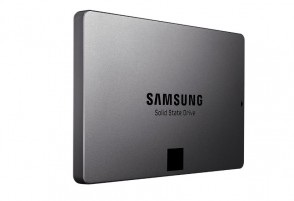 A couple months ago when I joined Samsung for their launch of the 840 EVO, the theme of their event was a SSD for everyone. Their goal with their SSDs is to reduce prices and increase capacities so that everyone would be able to gain access to SSD technology. With their Samsung 840 EVO, they’ve really put the money where their mouth is by offering a SSD that’s capable of top tier performance yet comes at a mainstream pricepoint. This is why for our mainstream build, the Samsung 840 EVO 250GB was on the top of our list of choices and at $0.68/GB, it’s a fantastic value as well.
A couple months ago when I joined Samsung for their launch of the 840 EVO, the theme of their event was a SSD for everyone. Their goal with their SSDs is to reduce prices and increase capacities so that everyone would be able to gain access to SSD technology. With their Samsung 840 EVO, they’ve really put the money where their mouth is by offering a SSD that’s capable of top tier performance yet comes at a mainstream pricepoint. This is why for our mainstream build, the Samsung 840 EVO 250GB was on the top of our list of choices and at $0.68/GB, it’s a fantastic value as well.
While 250GB should be enough capacity for a big majority of gamers, if you happen to have tons and tons of games, then it may be wise to opt for something like a 3TB Seagate Barracuda 7200RPM traditional hard drive to fill the gap. While traditional hard drives are slow, loud, and draw lots of power, there’s no arguing that they are still the leader when it comes to offering tons of storage capacity for the price. By placing the operating system along with the games you play most often on the SSD to take advantage of SSD load times and by placing games you play less often on the hard drive, you’re able to get the best of SSD technology yet still have the ability to download all your games onto your system. That is unless you can afford say… a 1TB Samsung 840 EVO… or a couple.
Final Pricing
Current pricing on Amazon for our build today is $1,207.02 minus a $10 rebate for the MSI GTX 770 2GB OC graphics card, which just fits into our $1,200 budget. Of course, there’s plenty of room for upgrades and a bit of room for downgrades as well, so be sure to post in the comments section below or check out the PC Builds and Upgrades section in our forums for any questions you may have.
Optional Components
Some readers have expressed interest in monitor, speaker, mice and keyboard suggestions, so we’ve also started including some recommendations for these items as well. I won’t be explaining the choices as these optional components are quite dependent on the purpose of PC (For example, someone serious about audio may end up with $400 Audioengine 5+ speakers and an ASUS Xonar Essence STX), but here are some suggestions that are a good fit for this build. If you have questions or need additional suggestions for these products here, be sure to post your question in the proper section in our forums.
| Monitor | BenQ VA GW2750HM 27″ Monitor | $220 |
|---|---|---|
| Sound Card | Creative Sound Blaster Z | $82 |
| Speakers | Audioengine A2 | $250 |
| Headset | Sennheiser PC 360 | $166 |
| Mouse | Razer DeathAdder 2013 | $52 |
| Keyboard | Razer BlackWidow Ultimate | $128 |
Remember, if you have any questions, need some help, or need to fit the build into your budget feel free to visit the forums! Myself, or the community here will be more than happy to help you out with your own custom build or answer any computer questions you may have. If this build doesn’t fit your needs, be sure to drop by our Computer Builds section to find more computer builds. If you spot any issues with our build such as GPU/case incompatibilities, cooler/case incompatibilities, etc. please let us know!
Also, be sure to join us on Facebook, Twitter, Google Plus, or YouTube to be updated on the latest news, reviews, tutorials, custom computer builds, and more!

![Best Mid-Range Gaming PC Build Under $1,200 [December 2013]](https://www.custompcreview.com/wp-content/uploads/2013/06/corsair-carbide-300r.jpg)
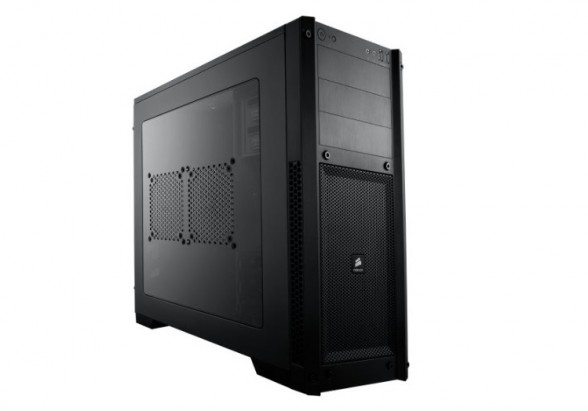
![Best Mid-Range Gaming PC Build Under $1,000 [February 2015]](https://www.custompcreview.com/wp-content/uploads/2012/11/corsair-200r-1.jpg)
![Best Gaming/Streaming/Recording PC Build Under $2,000 [March 2013]](https://www.custompcreview.com/wp-content/uploads/2013/03/corsair-obsidian-650d-2.jpg)
![Christmas Gaming and Video Editing Build [December 2011]](https://www.custompcreview.com/wp-content/uploads/2011/12/corsair-carbide-500r-top.jpg)
![Best Budget AMD Gaming PC Build Under $800 [October 2012]](https://www.custompcreview.com/wp-content/uploads/2012/06/antec-one-gaming-computer-case.jpg)
Hi, firstly, thanks for all your recommendations, they are great to read! Okay, so I was thinking of building a PC, but the shop I’m looking at doesn’t have the Corsair TX-650m, what other PSU do you recommend for this build? Thanks!
How about the XFX Pro 650w Core Edition? That’s a good one too.
http://www.amazon.com/gp/product/B0045L5LGI/ref=as_li_ss_tl?ie=UTF8&camp=1789&creative=390957&creativeASIN=B0045L5LGI&linkCode=as2&tag=cupcre06-20
Regarding the CPU.. the pictures and summary display Intel Core i7-4670K. Yet the actual review only talks about Intel Core i5-4670K. Are the pictures and display summary using the incorrect CPU??
Hey Donovan, good catch. The recommendation is for the i5-4670K. No idea what caused me to type i7. Brain fart. There’s no such thing as a i7-4670K, haha.
Do you think this build will need more then the two fans that come in the case? If so what would you recommend? Thank you..
I’d say no. There’s a 140 up front and a 120 in the rear. Should be good unless you really plan on populating the hard drive slots or if you’re planning on having multiple GPUs. I’d put the build together first then monitor the temperatures. If it’s getting too warm, you can always add fans later down the road.
That said, if you want to add more fans (or replace the ones onboard), I’d recommend Noctua fans. They’re quiet and they move a ton of air.
I got all the parts in for this today and assembled it. So far it is running great. I stressed it with Prime 95 and none of the CPU temps went above 60 degrees Celsius. So far it is able to run League of Legends and Starcraft 2 on max settings. The only issue I have so far is that the fan in my power supply is rattling a bit. I am going to look into that more tomorrow.
Glad to hear it works well! Everything looks good.
Hmm… the TX650m uses a 140mm double ball bearing fan so it should be very quiet. I’d imagine that it’s probably another fan rattling around. A lot of fans do that when they’re not driven at 100% which can get pretty annoying. Then again, everything has a chance of failing, so let me know what you find out. =)
Oh, OK. Sounds like there’s a bit of coil whine. Happens. It’s common in electronics, but it’s sometimes more noticeable in some products than others. I personally haven’t had major issues with that so it might just be that your unit is extra loud (or maybe I’m just not paying close enough attention), but I’m sure Corsair will take care of you if you contact them. They’re pretty good about that.
So I ended up returning the power supply to Amazon and getting a new one. This one was making the same noise which was really frustrating to find out after rewiring the whole computer. I went to the corsair forums and this seems to be a somewhat common issue with that PSU. I ended up ordering the Rosewill Capstone 450w for $60. I installed it today and there aren’t any unusual noises. In fact without the clicking from the PSU you can barely tell the computer is on which is nice.
For now I am either going to hold onto the corsair power supply and see if they come up with a solution to fix it or just return it to Amazon. It is nice backup to have a backup though.
How about putting this parts in a Bitfenix Prodigy,with a AsRock Z87-E iTX,and another cooler,maybe a liquid cooler?
What do you recommend:
MSI GTX 760 OC 2GB vs the 4GB version?
8GB vs 16 GB? Corsair Vengeance or G-Skill Ripjaws?
A good suply to fit in the case?
Could u do a $1500 build please. This will be my first gaming pc.
Sure thing. =)
Thanks so much =)
also I know you didn’t want to but could you please tell me your $1000 build because I have a very limited budget
With this pc I might be able to play smoothly?
Depends on what game you’re trying to play smoothly, but for most games at medium to high quality at 1080p it should be fine.
why does the link with the cooler master hyper 212 plus goes to hyper 101a?
Not quite sure about that. It may be that Cooler Master discontinued the Hyper 212 Plus since I don’t see it in stock anywhere, and they’re messing with the SKUs on Amazon as all links to the Hyper 212 Plus have changed.
That said, the Hyper 212 EVO is the newer model of the Hyper 212 Plus. It has slightly better performance as they’ve tweaked the heatsink a bit and improved the fan, but it costs a couple extra bucks more.
http://www.amazon.com/gp/product/B005O65JXI/ref=as_li_ss_tl?ie=UTF8&camp=1789&creative=390957&creativeASIN=B005O65JXI&linkCode=as2&tag=cupcre06-20
Oh ok. Luckily i decided to buy one from ebay instead of from the link.
quick question though. what wifi adapter would you recomend for this pc? I’ve heard of adapters that uses the PCI slots that go pretty fast, but I don’t know if there would be room for it inside this build. I might just use a usb type if that’s the case.
Sorry this is the first time that I will be building a pc.
I like having internal adapters since it frees up a USB port and it generally gets better signal due to the fact that the antennas are larger and you get more of them. That said, if you’re running a multi-GPU configuration or you’re running lots of PCIe cards, you might not have internal space to run a PCIe wifi adapter.
Personally, I’d go Powerline for a desktop. It’s way faster and setup is easy as well.
http://www.amazon.com/s/?_encoding=UTF8&camp=1789&creative=390957&field-keywords=powerline&linkCode=ur2&tag=cupcre06-20&url=search-alias%3Daps
i’ve made a couple of modifications to this build, and im
not sure if the 650w power supply will still be sufficient (ps calculators are
all over the place). Instead of the i5, I’ll be using the i7 4770k, and for the
motherboard I settled on the Z87 Pro instead of the plus (integrated wifi). Will
the 650 be enough or should I shoot for a 750w?
650w is fine. Haswell processors don’t require all that much power.
I think you should instead go with the 750/750ti, for it has lower power consumption and higher performance, but thats just me.
I thought about it, but was already running a little overbudget with the processor / mobo upgrade. i’m waiting for the final components to come in this week then i’ll be ready to build. i’ll post the results when i do
Is it possible for you to do a slightly high end gaming system, somewhere around 1500/1700.
Could u help me out with storage? Im buying a 250gb samsung (the one you mentioned), but im thinking if I should get another for my os? Suggestions?
Can you still overclock this if you purchase the Intel Core i7 chip?
ASSUMING YOU GET THE K SERIES CHIP, THEN YES
I know this is an old post, but how noisy is this rig?
First time builder here, is a sound card necessary? I’ve been looking at build videos and none of them really had a sound card. I’m guessing the mobo has one integrated?
It’s not necessary, which is why it’s in the optional section. The motherboard will have integrated sound, but a sound card will definitely sound a lot better especially if you have higher end speakers/headphones.
Would I be able to go with an Intel Core I7 with everything else staying the same?
Yes. Be sure to go with a 4th Generation Core i7. For example, Intel Core i7-4770K.
Sorry.. but you can tell me if i can play ArmA 3 or Battlefield 4 on this build? Thx.
Yes, I definitely recommend going with the Z97 boards if there isn’t a huge price difference. Z97 is a very incremental upgrade, so there’s not a whole lot of differences from Z87, but it will support upcoming 5th generation Intel Core processors which will give additional room for upgrades. Additionally, there’s also a PCIe x2 M.2 slot as well for PCIe SSDs.
Hey can u please do a 1200$ build but for 2014 ?